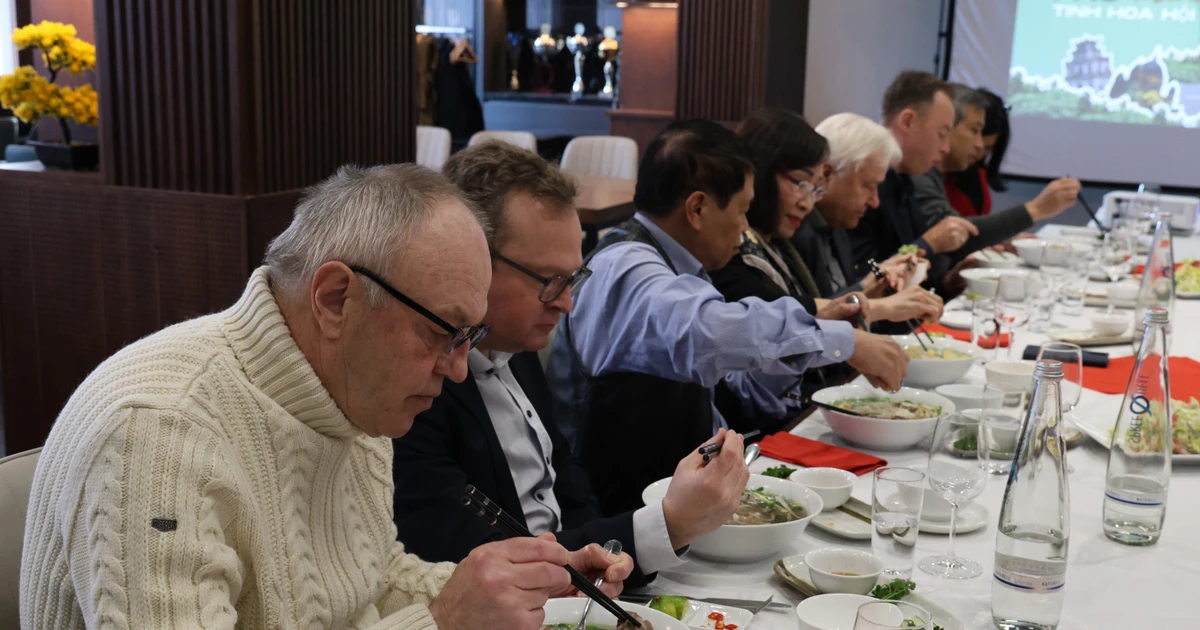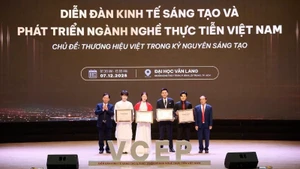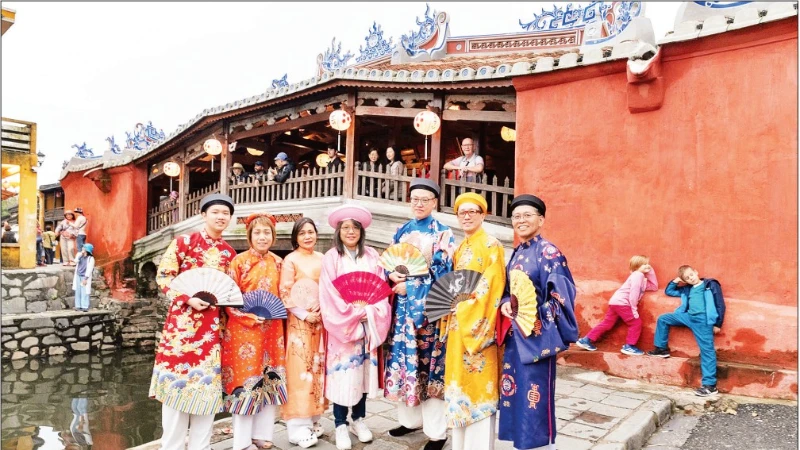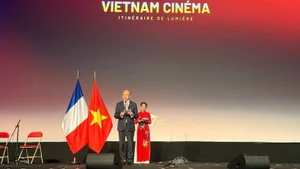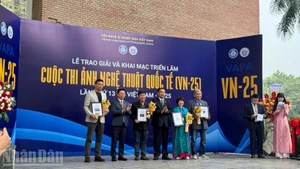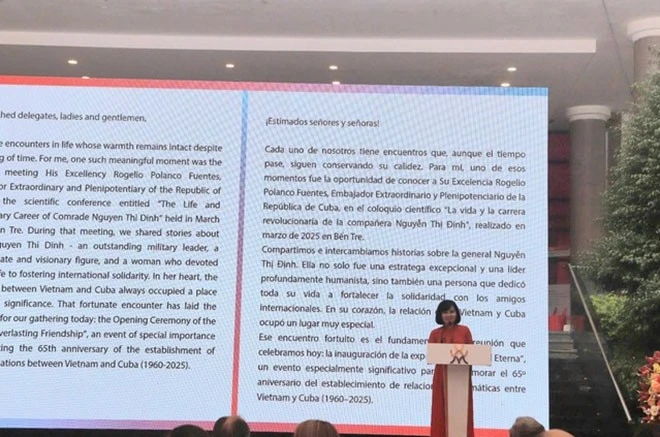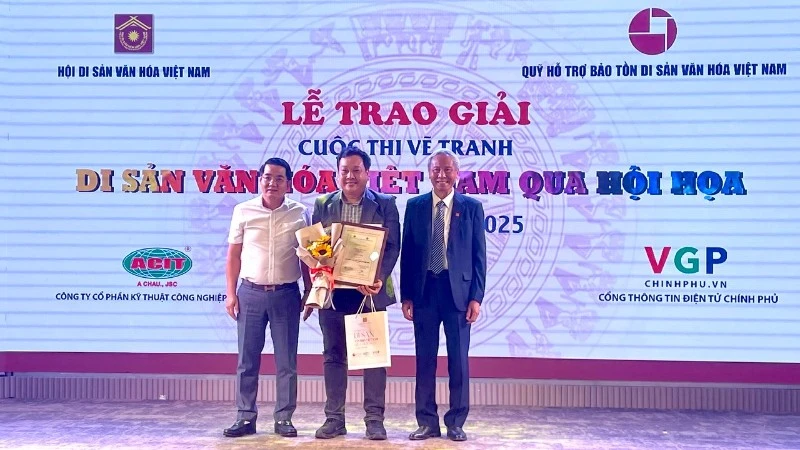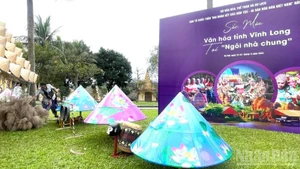Nostalgia for the Yen Thai rhythm
All individuals are now familiar with the folk verse that reads, "Thick smoke and fog surround; the Yen Thai rhythm echoes over the West Lake's mirror." The "Yen Thai ryhtm" is a metaphor for the bustling activity that takes place in the Yen Thai ’Do’ paper craft village, which is located by the windy West Lake.
The village of Yen Thai, which is located in the well-known Ke Buoi region, was well-known for its production of ’Do’ paper. In his book titled "Mechanics and Crafts of the People of Annam", Frenchman Henri Oger characterised traditional ’Do’ paper from the Buoi region as a paper that is both lightweight and durable. Due to its fibre properties and its entirely manual and chemical-free production, ’Do’ paper does not smudge when written on, resists insects, and can endure for hundreds of years. Therefore, Vietnamese dynasties historically used ’Do’ paper for printing scriptures, writing, folk painting, and, most notably, for issuing royal decrees. Many temples and villages still preserve these royal decrees.
Tran Van An, a resident of Alley 514 Thuy Khue Street, formerly known as Yen Thai Village, located in Hanoi’s Tay Ho District, recalls that the ’Do’ paper craft was once flourishing, with nearly every family in the village participating in it. Every member of his family, including his parents and siblings, contributed to the paper production, which took place throughout both day and night. There was a paper market located at the end of Thuy Khue Street where the villagers sold their wares to customers from other regions.
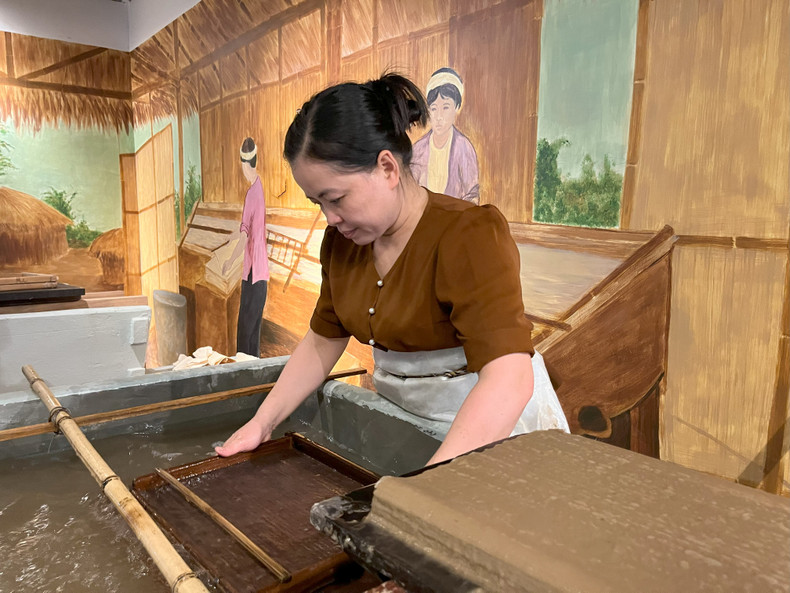 |
| A step in making 'Do' paper |
According to An, the process of making a sheet of ’Do’ paper involved more than thirty steps, with nine to ten major stages. The stages included: obtaining ’Do’ trees, peeling the bark, soaking, washing, pounding, cooking, filtering, sheet-forming, packing, and transporting. His mother was skilled in the process of forming the sheets, which was a challenging task that required the paper to peel easily without tearing and to adjust its thickness. The pounding echoes reverberated throughout the entire village, infiltrating local proverbs and songs.
Despite having once been a well-known craft, no one in Yen Thai practices it today, and the tools have disappeared.
According to Nguyen Minh Hoai, who holds the position of Vice Chairman of the Buoi Ward People's Committee, it was observed that the production of ’Do’ paper in Buoi was still being preserved through cooperatives during the 1990s. In spite of this, these cooperatives disbanded by the early 2000s, which resulted in the craft's disappearance in the region, leaving it only in memory.
Reconstructing the ’Do’ Paper Craft Village model
There has been a growing interest in rediscovering old values as lifestyles continue to change. Following the programme for economic development and effective management of West Lake and surrounding areas from 2015–2020 that was implemented by the Tay Ho District Party Committee, the Buoi Ward People's Committee was given the responsibility of constructing a cultural tourism service point and restoring the model of the ’Do’ paper craft village.
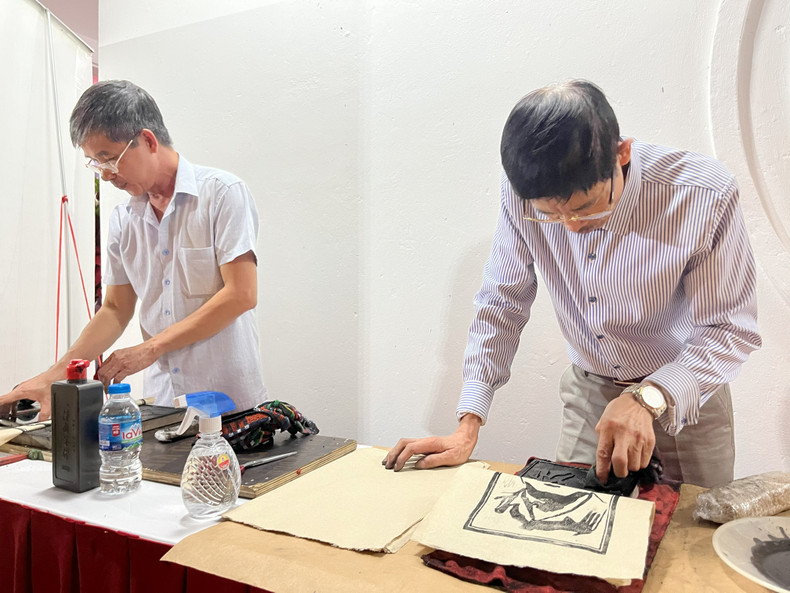 |
| The artisans make great efforts to preserve ‘Do’ paper craft. |
After some time has passed, the cultural tourism service point that showcases the traditional ’Do’ paper craft of the old Buoi region has been launched at 189 Trich Sai Street, which is located in Buoi Ward.
In addition to re-creating production stages, showcasing tools, and displaying historical images related to ’Do’ paper, this website features sections that display traditional methods of making ’Do’ paper, including woodblock printing, raw materials, and ’Do’ paper products. Additionally, it is responsible for organising artistic and cultural activities that are traditional.
The managers of the traditional ’Do’ paper craft exhibition extends invitations to skilled artisans to demonstrate the art of paper making and woodblock printing, as well as to invite product creators to take part in the exhibition.
While skilfully shaping paper, Nguyen Thi Do, a resident of Cham Khe Village, Phong Khe District, Bac Ninh Province, revealed that the ’Do’ silk paper craft is only practiced by a small number of families in her village. In spite of its scarcity, there is still a demand for it, and her family produces it whenever required. She feels a sense of pride when she introduces this craft to both locals and tourists.
The opening of the cultural tourism service point has generated excitement among Yen Thai villagers. Even though the restored model does not capture all of the complexities of the craft, it does provide both locals and visitors with an understanding of this craft that was once very well-known.
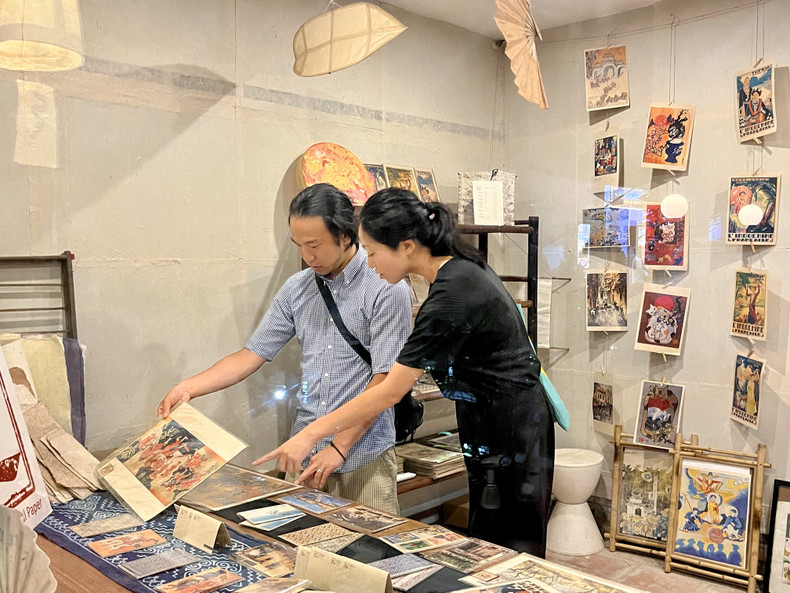 |
| Many people are still interested in 'Do' paper. |
Not only does the cultural tourism service point introduce a traditional craft, but it also becomes a familiar spot for both locals and tourists, according to Nguyen Thanh Tinh, the Vice Chairman of the People's Committee of the Tay Ho District. In addition to tourism, it organises extracurricular tours for the schools in the district, providing the younger generation with opportunities to learn about traditional craftsmanship.
This has led to the revival of a valuable traditional craft that had been extinct for a long time. Locals and tourists in Thang Long now have the opportunity to learn about the historical significance of the long-practiced traditional craft.

